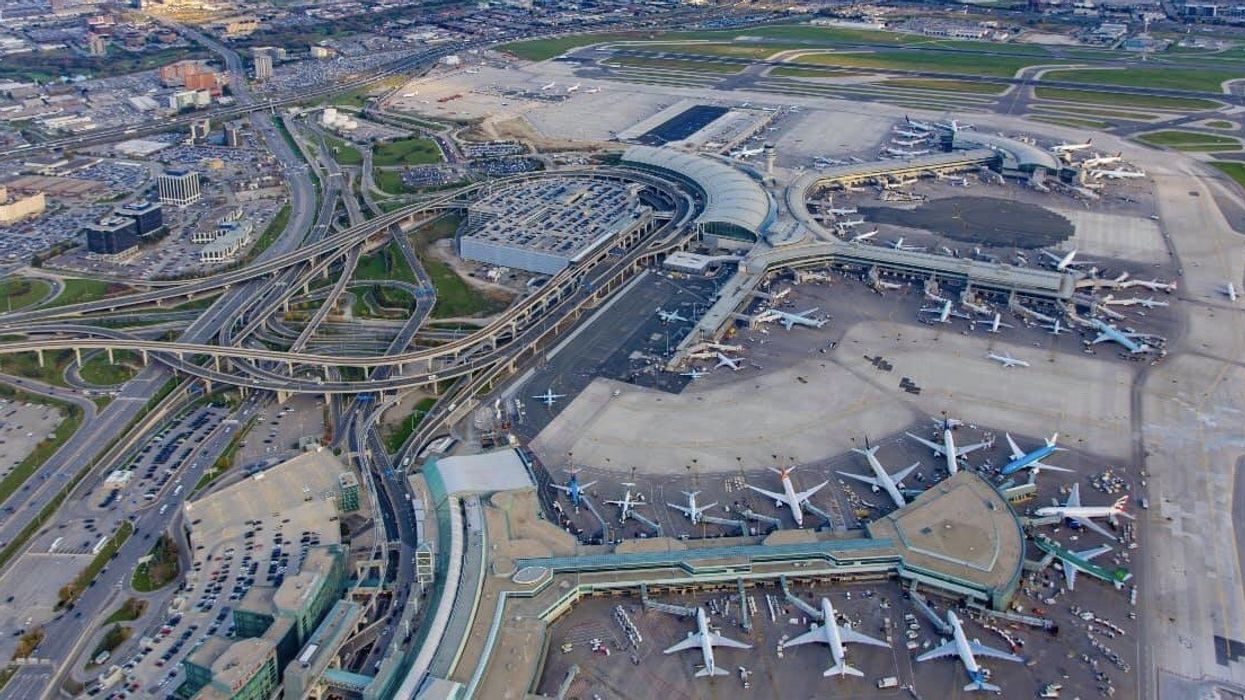The Greater Toronto Airports Authority (GTAA) is adamant; before you get people into planes you have to get them out of cars.
The future, insists GTAA vice-president of stakeholder relations and communications, Hillary Marshall, is dependent on public transit – lots and lots of public transit. Though things are better than they were, most passengers and airport employees would, by far, rather drive than rely on the Union Pearson Express, the TTC, and the extensive network of bus routes.
READ: Bold Transit Expansion Boosts Mississauga’s Urbanization
Nothing new about that; like Canadians everywhere, Torontonians cling to the private automobile as if their life depended on it. If that weren’t bad enough, the growing plague of Uber, Lyft, limos and taxis means that traffic grows worse with each passing year. And for those who have no option but public transit, getting to and from the airport can be an endurance test.
The numbers tell a stark story: nearly 50,000 people – 46 percent of them immigrants – work at the airport, which makes it the second largest employment zone in Canada. It is surpassed only by downtown Toronto. Fully 130,000 people come and go to the airport every day. That’s 50 million trips annually. Unbelievably, 94 per cent are by car. And if you think that’s bad, keep in mind that things will only get worse. The GTAA anticipates that by 2037 Pearson Airport will handle upwards of 85 million people yearly*.
Is it any wonder so many experts are now warning that failure to control our vehicular addiction will have catastrophic results? Indeed, it already has. As Marshall makes clear, “Without the proper transit infrastructure the region will implode.” By region, she means the Greater Toronto and Hamilton Area (GTHA), and specifically that vast swath of land within a 2.5-hour drive of the airport. That’s why the GTAA is proposing what Marshall calls Union Station West, “a multi-modal transit hub that would serve a variety of users, a series of different transit lines all connecting through one location.”
As she explains: “We started the process by thinking about how to bring more passengers to and from the airport from across the GTA. We’ve got to be able to move more workers to the airport and back home. We have 400 employers in the airport employment zone, which encompasses parts of Brampton and Mississauga. The land here is incredibly valuable and growing more valuable. The employment lands are also finite. We expect to see higher-order development on these lands in the future. We’ll also see a growing number of businesses and people who value access to the airport, which is the modern point of entry into world markets. They want good transit connectivity. That’s why it’s important for the GTAA to take a leadership role.”
Though the authority doesn’t have the power to mandate transit routes or connections with various cities, it does have representatives of those cities on its board. It also has the strength of its argument, which, let’s be honest, is irrefutable. Of course, politicians, both local and provincial, are more comfortable following than leading. Rather than spend the billions required to build the public transit infrastructure the GTA so desperately needs, they prefer empty and even counter-productive public relations exercises such as widening highways, enlarging urban expressways, eliminating vehicle registration fees and nixing road tolls. The political leadership of Toronto is so beholden to the driver lobby, it rarely finds its way clear to take the obvious steps such as lowering speed limits or adding crosswalks in residential neighbourhoods.
Given this sort of civic culture, finding the money necessary to realize the GTAA’s grand vision won’t be easy. At the same time, even Doug Ford’s Conservatives have officially recognized the need for public transit to Pearson. Last spring, the Tories announced the province would provide $4.7 billion to connect the Eglinton Crosstown to Pearson by 2031. The GTAA itself has also kicked in $78 million to help plan the project, a small yet telling contribution.
READ: Completion Date for Eglinton Crosstown LRT Pushed Back
“We know that if we’re going to advance this sort of vision, we’re going to have to develop synergies with [provincial transit authority] Metrolinx and other organizations,” Marshall explains. “We aren’t downtown Toronto, but we are a major component of the city and region. It’s important for the GTAA to take a leadership role.”
She also talks about a rail line from Kitchener, a Finch LRT that would travel to Pearson via Humber College, direct connections with other GTA airports in Hamilton, Simcoe, Toronto and, most remarkably, even improving transit routes to Malton, Jane and Finch, Lawrence Heights and Rexdale, where, Marshall says, “many GTAA workers live.” Such enlightened thinking is as rare as it is unexpected, but it reveals an organization light years ahead of peer institutions.
“Pearson Airport is our connector to the world,” Marshall says. “Now we need to connect the communities around the airport.”
*A previous version of this story said the GTAA anticipates that by 2037 Pearson Airport will handle upwards of 110 million people yearly. The GTAA has since reduced that number to 85 million.





















